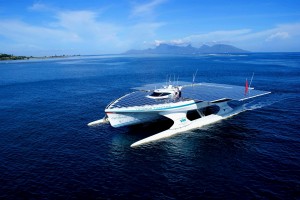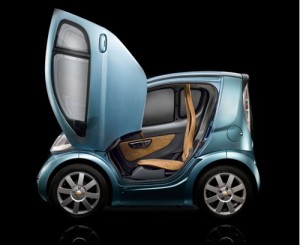 I have mixed feelings about this one. PlanetSolar is less than one day from completing a circumnavigation using a boat powered only by the sun; it’s taken them about 600 days to do this. I’m not quite sure what they’re trying to prove here. If you want to go ‘green’ on your trip around the world, solar just can’t compete with wind. Sailboats are a proven ‘green’ technology that are faster and can go more places in the world’s oceans (PlanetSolar is limited more to the equatorial regions where the sun’s more direct rays result in more powered gathered by the solar panels). Likewise, storms pose little challenge for sailboats but the cloud cover hurts the performance of PlanetSolar. Yes, solar is useful even on sailboats for powering shipboard electronics, but when it comes to propulsion, the abundant wind on the oceans is a fantastic, proven resource.
I have mixed feelings about this one. PlanetSolar is less than one day from completing a circumnavigation using a boat powered only by the sun; it’s taken them about 600 days to do this. I’m not quite sure what they’re trying to prove here. If you want to go ‘green’ on your trip around the world, solar just can’t compete with wind. Sailboats are a proven ‘green’ technology that are faster and can go more places in the world’s oceans (PlanetSolar is limited more to the equatorial regions where the sun’s more direct rays result in more powered gathered by the solar panels). Likewise, storms pose little challenge for sailboats but the cloud cover hurts the performance of PlanetSolar. Yes, solar is useful even on sailboats for powering shipboard electronics, but when it comes to propulsion, the abundant wind on the oceans is a fantastic, proven resource.
A solar boat? I don’t get it. Hoist the mainsail, matey.


